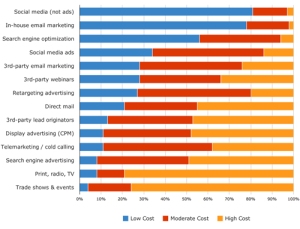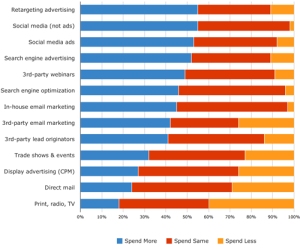Let’s start with the easy part, the CMO is a Chief Marketing Officer. The C-suite designation is earned through experience in leadership and management of the marketing function within an organization. Typically CMO’s will have a dozen or more years’ experience in both strategy development and tactical execution.
The CMO’s role is to advise the CEO and other executive team members how best to expand markets, increase awareness, build loyalty, drive engagement and grow revenues. The high-level marketing leader is responsible for creating the “voice” for the organization through the brand experience.
A CMO is the brand ambassador, loyalty activist and customer champion.
Internally, the function of a Chief Marketing Officer is to bring together the talent, processes and technology that helps an organization realize the vision and execute upon the strategy that is aligned to specific organizational goals. It is the CMO’s responsibility to build the marketing plan that outlines roles, responsibilities, budgets, resources, timelines, tactics and measurable outcomes. They lead the marketing organization and orchestrate their day-to-day activities.
Outsourcing for a company or organization is to purchase (goods) or subcontract (services) from an outside supplier or source.
Outsourcing is simply giving the responsibility of the position to someone that does not reside within the business. Why would you outsource an executive-level position?
Top reasons organizations outsource:
- Experience and competence
- Budget and/or need to reduce costs
- Assessment of people, processes and/or technology
- Gaps in skills and capabilities
- Need for industry and market expertise
- Resource constraints within existing teams
- Urgency to drive initiatives or deliver critical projects
- Strategic development
- Team leadership
- Tactical management and oversight
- Need to streamline operations and workflows
- Test job requirements and long-term business needs
- Reduce risk
- Advise and consult with leadership
Startups, SMBs, high-growth, turnaround and transitioning businesses can lack the time and dollars required to invest in bringing aboard a full-time senior marketing executive. Outsourcing the CMO function allows leaders to leverage high-level talent in smaller increments of time and budget, while still gaining qualified and capable expertise that can help accelerate strategic business plans.
When do you need an outsourced CMO?
- You have a strong tactical marketing team; however, you do not have a marketing person sitting at the table where company decisions are made about the vision, mission, strategy, tactics and growth plans for the next 3-5 years.
- You lack a marketing strategy or plan.
- You desperately need a sustainable marketing engine that can deliver predictable results.
- You spend money on marketing, though you see little ROI or do not have the capabilities to track budgets, measure performance or forecast results.
- You need better competitive analysis and market research to know if you are talking to the right people and delivering the right products and services.
- You need a comprehensive assessment of marketing tactics, team members and capabilities to ensure you are built for long-term success.
- You know digital transformation can greatly improve your business, yet you lack the expertise that can represent marketing’s role in that process.
- You want to implement advanced tactics or implement marketing technologies to help the organization best utilize their data and assets to improve the customer experience.
- You need an expert that can help you improve brand loyalty, reduce churn and supports the business development team to achieve their growth targets.
- You are dissatisfied with results of marketing and the impact on revenue and know that you are missing out on existing market opportunities.
Today’s marketing function is complex. Business are operating at Internet speed, content is coming in from right and left, technology is taking over the world and digital transformation is accelerating the way we operate in our global economy.
Compounding it all are needs to manage vast amounts of data, utilize advanced analytics, define complicated customer journeys, understand the infiltration of artificial intelligence, manage talent, assess numerous marketing technologies, facilitate demands for personalization and improve customer experiences and create endless amounts of content to stay relevant. And that’s just the beginning. It’s overwhelming for most organizations, along with managing everything else that impacts growth.
It can’t be overstated, marketing is getting more and more complex. Companies need experienced executive marketing leadership to help manage growth, breakdown internal silos, and improve efficiency and economics.
Senior marketing expertise and leadership is essential at a macro-level to bring together the micro-level experts needed to deliver results in this entangled environment.
Having a competent leader that can help an organization stay abreast of trends, recognize opportunities, align resources, implement strategies and resist temptations to waste money is critical for any organizations’ success – whether working within the leadership team or as an outsourced contributor.
An outsourced CMO can provide the experience required to create, define, build, manage and execute the multitude of tactics needed to achieve your business goals.
If you don’t have the resource internally, outsourcing the Chief Marketing Officer function provides flexibility for a business to utilize an experienced resource for the required time, scale and budget that the business can afford today.
If you have questions about the benefits of an outsourced CMO or are looking to assess your current marketing function, contact me at [email protected].
Jamie Glass, CMO + President, Artful Thinkers, a sales and marketing consulting company.









You must be logged in to post a comment.